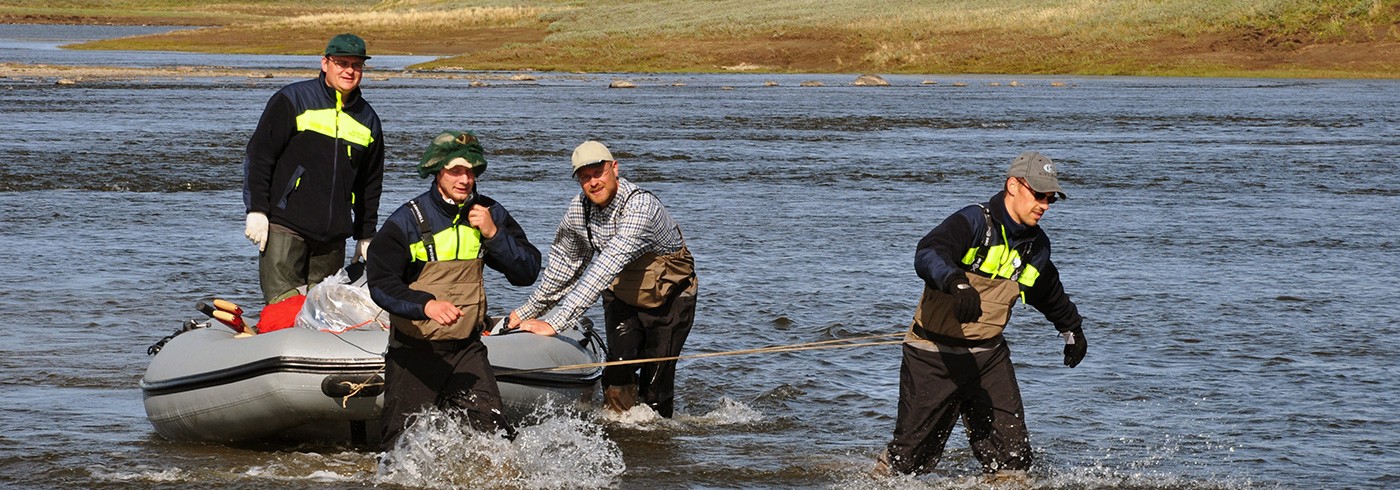Using ancient DNA to study the impact of past climate change on Ice Age species
5 July 2010 - 20 August 2010The last Ice Age was a period of well-documented and significant climatic change. As such, it provides an ideal case for investigating the interaction between climate change and species demographics. The main purpose of this project was to collect fossil material from Ice Age species for ancient DNA analysis, in order to examine how past changes in population size and genetic divergence relate to changes in climate.
The results of this project are important for our understanding of how populations and species become extinct. Moreover, better knowledge of how climate change affects populations will increase our ability to forecast the impact of future climate change on biodiversity in the Arctic.
Collecting along the river
The fieldwork was conducted on the Taimyr Peninsula in northernmost Russia, along the Bolshaya Balakhnya River. The Taimyr Peninsula is known for the large amount of fossil material that is exposed along river embankments each summer.
The project initially focused on collecting fossilized small rodent material (from true and collared lemmings), so we first used a set of sieves of varying mesh size to sift through permafrost material collected from sections along the river. However, due to a scarcity of small rodent material in the permafrost, we subsequently expanded the project to include bones and teeth from large herbivores, such as horses, bison, and woolly mammoths. A small electric saw was used to collect samples for radiocarbon dating and DNA analysis.
Dating and data
We collected 120 fossil samples from ten species. The samples will be radiocarbon dated and genetically analysed in the Ancient DNA laboratory at the Swedish Museum of Natural History.
The results of the project will be published in international peer-reviewed journals, and the DNA sequences will be submitted to a publicly available database (e.g., GenBank).











